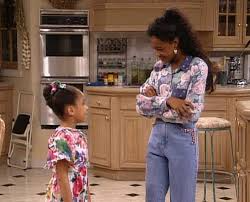
While most fans remember The Cosby Show for its warmth, humor, and unforgettable Huxtable family, its influence goes far beyond what appeared on screen. Behind the scenes, the sitcom quietly transformed the television industry—from programming strategies and casting decisions to advertising and diversity initiatives. This article dives into the lesser-known but equally powerful legacy of The Cosby Show and how it rewrote the rules of network TV.
Reinventing Prime Time Television
Before The Cosby Show, Thursday night TV was far from the ratings goldmine it would later become. NBC executives took a risk airing the new sitcom at 8 p.m.—a critical time slot previously dominated by action dramas and news programming. Within a year, the Huxtables didn’t just win the hour; they owned the night.
Their success created what became known as “Must-See TV,” a network strategy that reshaped programming for the next two decades. Shows like Cheers, Seinfeld, Friends, and ER would later ride the wave of Thursday night domination, thanks in part to the foundation laid by The Cosby Show.
A Business Model Breakthrough
Advertisers quickly noticed something unique: The Cosby Show wasn’t just pulling high ratings—it was attracting a highly desirable, cross-cultural audience that included middle- and upper-class households, Black and white viewers, and multigenerational families.
For the first time, advertisers re-evaluated how they targeted audiences, seeing African-American-led shows as not only viable but profitable. The result? A boom in opportunities for diverse content in mainstream media and greater investment in Black-led productions throughout the late 1980s and early ’90s.
Shifting the Studio System
The show also changed the way networks and studios viewed creative control. Bill Cosby demanded—and received—significant input on everything from casting to wardrobe to scriptwriting. He insisted on authenticity, from accurate depictions of African-American art to correct pronunciation of African names. While controversial in some circles, his firm stance on creative quality elevated industry expectations.
This opened the door for more creators of color to advocate for similar autonomy, a trend we now see flourishing with producers like Shonda Rhimes, Issa Rae, and Donald Glover.
Investing in Black Talent, On and Off Screen
Beyond the famous faces on screen, The Cosby Show actively cultivated Black talent behind the scenes. Writers, directors, costume designers, and production staff were given opportunities rarely available to people of color in the 1980s television landscape.
It also launched or boosted the careers of many actors and creatives, including Phylicia Rashad, Malcolm-Jamal Warner, and Tempestt Bledsoe, setting a precedent for inclusive casting that would become a blueprint for future family sitcoms.
The Lasting Blueprint for Success
In many ways, The Cosby Show was the original multi-platform brand. It inspired merchandise, educational tie-ins, and even helped fund scholarships for Black students. The ripple effect of its business model, both economically and creatively, still influences the structure of successful television franchises today.
Conclusion
The Cosby Show wasn’t just a cultural phenomenon—it was a turning point for the television industry. By breaking down stereotypes, rewriting network strategy, and advocating for authentic representation, it helped lay the groundwork for the more inclusive, diverse, and dynamic TV landscape we see today.
While its legacy is complex, its influence is undeniable. For industry professionals and TV fans alike, understanding the behind-the-scenes power of The Cosby Show offers valuable lessons about innovation, representation, and impact.
